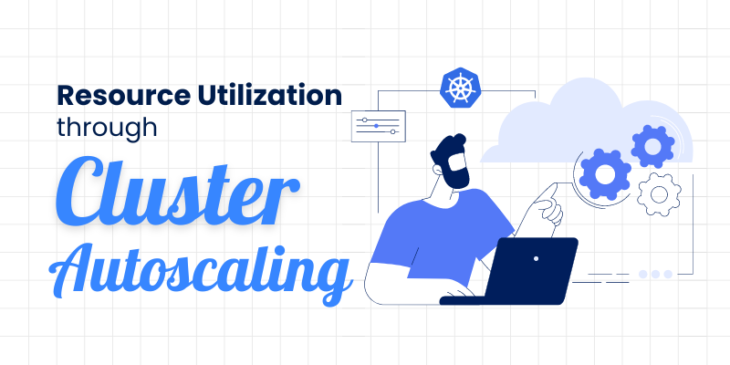Cloud-native technologies offer the flexibility and scalability needed to meet fluctuating demands, but efficiently managing resources can be a challenge, especially in dynamic environments. This is how Cluster Autoscaler comes into the scene, offering a solution to maximize resource usage in Kubernetes clusters.
Discover how to optimize resource allocation and enhance scalability in cloud-based environments with cluster autoscaler. Explore these cluster auto-scaling strategies for maximizing resource utilization to ensure efficient and cost-effective data processing workflows, here, in this blog..

Understanding Kubernetes and Resource Utilization
Kubernetes has emerged as the de facto standard for container orchestration, enabling developers and operators to effectively use containerized applications in a secure, robust and scalable manner. Kubernetes has the amazing ability to efficiently allocate resources across a cluster of nodes. All resources that an application needs are reserved for individual pods such as CPU, memory and storage. This allocation is done on the basis of resource requests and limits listed in the pod specification files.
Kubernetes is indisputably effective when it comes to the distribution of resources, but in a very unstable environment, it may be rather complicated to maintain optimal resource utilization. It all depends on the workload, which in turn, may simply be at the peak of demand or a fall in demand. The result will be wasting resources and increased costs when the resources are underutilized, and lead to performance degradation and instability when resources are overutilized.
Introducing Cluster Autoscaler
Cluster-Autoscaler is a Kubernetes component that is designed to solve the problem of resource optimization by automatically changing the size of a cluster itself in response to the current demand. It dynamically scales the cluster up or down by adding or removing nodes as and when needed, ensuring correct resource-to-usage balance without over-provisioning.
[Good Read: Top 5 Ways Gen AI Is Revolutionizing DevOps ]
Benefits of Cluster Autoscaler
Here are some of the benefits of cluster autoscaling,
- Cost Optimization: The Cluster Autoscaler mechanism enables the Kubernetes cluster to self-adjust itself frequently and automatically, as per the workload demand so that efficient resource utilization is available, thus, leading to a reduction of infrastructure costs. This also prevents the instance of over-consumption of cloud computing resources making sure that you only pay for the resources that you actually need.
- Improved Scalability: Cluster Autoscaler, the other critical part of Kubernetes is used to automatically scale up or down according to the changes in the workload demands. This can improve the performance of infrastructure and at the same time allow it to function properly with efficiency, even at times of heavy traffic, helping to deal with peaks and fluctuations better.
- Enhanced Reliability: Cluster autoscaling makes sure that resources are maintained in the most optimized manner, supporting cloud infrastructure optimization. This, in turn, helps in eliminating performance bottlenecks as well as resource contention, improving the overall reliability and stability of applications, thus providing end users the expected consistency of performance.
Cluster Autoscaling Best Practices
While Cluster Autoscaler offers significant benefits, it’s essential to follow these autoscaling strategies to ensure effective resource utilization:
- Define Resource Requests and Limits: Specify the resource descriptions and limits of pods so that they can be relied on by Cluster Autoscaler, as it uses the actual metrics for deciding what to scale.
- Set Up Horizontal Pod Autoscaler (HPA): Maximize flexibility by introducing the cluster autoscaler and, simultaneously, the HPA. Combine these two tools to scale clusters and pods individually to utilize resources better and respond to application-specific metrics.
- Monitor and Tune Scaling Policies: Continually supervise the Cluster Autoscaler performance and try to alter scaling modifications as per the workload shifts, meeting business objectives.
You can check more info about: Maximizing Resource Utilization With Cluster Autoscaler.






